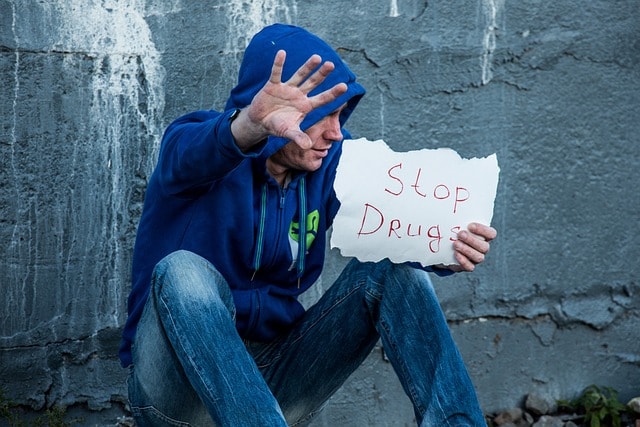

Methamphetamine, often referred to as crystal meth, is a highly addictive drug that directly impacts the central nervous system. Classified as a Schedule II controlled substance by the Drug Enforcement Administration (DEA), methamphetamine has a high potential for misuse, dependence, and devastating health consequences. Early identification of the signs someone is on meth is critical for preventing long-term health problems and offering timely intervention. This article provides an in-depth look at the physical symptoms, behavioral changes, and risks associated with meth use, while highlighting effective meth addiction treatment options.

Methamphetamine abuse leads to profound changes in brain chemistry, which can result in mental health conditions like anxiety, depression, and psychosis. Prolonged abuse of this stimulant drug affects every aspect of a person’s life, from their physical health to their relationships and daily functioning.
Substance abuse of meth often leads to erratic behavior, mood instability, and neglect of responsibilities.
Without intervention, the risks associated with methamphetamine use disorder can escalate into life-threatening complications, including meth overdose.
Recognizing the signs of methamphetamine addiction early provides an opportunity to access life-saving resources such as counseling, medical detox, and behavioral therapy. Delayed action can result in worsening symptoms and more severe health risks.

One of the most visible signs of meth abuse is meth mouth.
Severe dental problems like tooth decay, gum disease, and missing teeth are common.
Methamphetamine reduces saliva production, contributing to poor oral hygiene.
Untreated meth mouth can lead to long-term oral health issues.
Prolonged meth use causes noticeable physical changes.
Extreme weight loss and malnutrition occur due to reduced appetite.
Skin sores from excessive scratching or picking are common among meth users.
Track marks may be visible on individuals who inject meth.
The effects of meth extend to daily routines and habits.
Meth users often experience disrupted sleep patterns, staying awake for days.
Personal hygiene is frequently neglected, and erratic behaviors like risky activities increase.
Using meth leads to mental health disturbances and irrational actions.
Tweaking occurs during the crash phase, with heightened paranoia and anxiety.
Users may engage in compulsive actions, like repetitive cleaning or disassembling objects.
Poor judgment and risky decision-making are common.
Tweaking is a critical phase in methamphetamine use disorder, marked by cognitive and emotional instability.
Mood swings, paranoia, and aggressive behavior often accompany tweaking.
Anxiety and agitation are heightened during this period.
Understanding the signs of methamphetamine addiction is key to early intervention.
Chronic meth use often results in neglect of responsibilities, relationships, and hygiene.
Drug facts suggest compulsive use and withdrawal symptoms indicate addiction.
Recovery from meth addiction is possible with structured treatment.
Medical detox is the first step in managing meth withdrawal safely.
Behavioral therapies like cognitive-behavioral therapy (CBT) address underlying causes of addiction.
Support from support groups and mental health services administration enhances long-term recovery.

Family members play a significant role in supporting recovery.
American addiction centers emphasize the importance of emotional support and resources.
Encouraging a loved one to seek help can make a difference in their recovery journey.
The long-term effects of meth are life-altering and often irreversible.
Prolonged use increases the risk of organ failure, chest pain, and heart attack.
Meth use can lead to health risks like HIV/AIDS or hepatitis from sharing needles.
Mental health conditions such as psychosis and depression frequently develop.
Withdrawal from meth is challenging but manageable with the right support.
Meth withdrawal symptoms include depression, fatigue, and intense cravings.
Treatment involves medication-assisted treatment, therapy, and counseling to ease withdrawal and aid recovery.
Recognizing the signs of meth use is the first step in addressing the devastating effects of methamphetamine addiction. Physical, behavioral, and emotional symptoms often serve as warning signs, signaling the need for intervention. Ignoring these signs can lead to severe health complications, strained relationships, and irreversible damage to mental and physical well-being. Understanding the symptoms and seeking professional help can make a significant difference in an individual’s journey toward recovery.
If you or someone you care about is showing signs of drug abuse, it’s essential to act swiftly. Addiction impacts not only the individual but also their family, friends, and community. Meth use can result in life-threatening consequences, including overdose, severe mental health disorders, and long-term physical deterioration. Addressing these issues early provides a better chance for recovery and minimizes further harm.
Support is available, and recovery is achievable with the right combination of treatment and encouragement. Professional assistance, including meth addiction treatment, offers a structured approach to overcoming dependency. Options such as medical detox, behavioral therapies like cognitive-behavioral therapy (CBT), and participation in support groups help individuals address the root causes of addiction and build healthier coping mechanisms. These resources are vital for long-term sobriety and overall well-being.

At Sullivan Recovery, as an in-network provider we work with most insurance plans, such as:
And More
If you or a loved one are struggling with mental health challenges or substance abuse, reach out to Sullivan Recovery today. Our team of compassionate professionals is here to support your journey towards lasting well-being. Give us a call at 949-836-7180.
The most common signs of meth use include noticeable physical, behavioral, and emotional changes. Physical symptoms include meth mouth, extreme weight loss, and skin sores. Behavioral signs often involve erratic actions, risky decision-making, and disrupted sleep patterns. Emotional symptoms, such as paranoia, anxiety, and mood swings, may also appear. If these signs are present, it’s essential to seek professional help immediately.
Meth use takes a severe toll on the body. It can lead to severe dental problems like tooth decay and gum disease, often referred to as meth mouth. Users frequently experience extreme weight loss due to suppressed appetite and malnutrition. Long-term use can result in organ damage, weakened immune systems, and an increased risk of heart problems, strokes, and infectious diseases such as HIV/AIDS and hepatitis.
Yes, recovery from meth addiction is possible with the right treatment and support. Meth addiction treatment often begins with medical detox to manage withdrawal symptoms safely. Behavioral therapies, such as cognitive-behavioral therapy (CBT), help individuals address the underlying causes of addiction. Participation in support groups and aftercare programs can further reinforce long-term sobriety and help prevent relapse.
If you suspect a loved one is using meth, approach the situation with care and compassion. Avoid judgment and focus on encouraging them to seek help. Share information about treatment options, such as local addiction centers or counseling services. Offering emotional support and involving professionals in intervention efforts can make a significant difference. Remember, recovery is a journey, and your support can play a vital role in their success.